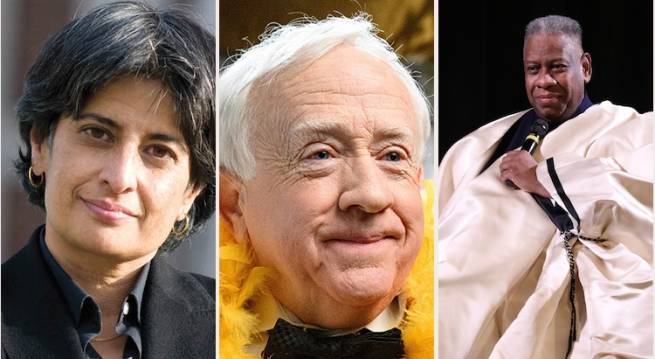
In 2022, we lost many queer legends who paved the way for LGBTQ+ people in films, music, and in life. We take a look at some of those we lost this year, honoring their legacy and dedication to their community.
Activists Urvashi Vaid, Arnie Katnrowitz, and Shatzi Weisberger; actor Leslie Jordan; actress Isabel Torres; and fashion icon and editor André Leon Talley are just some of those from the LGBTQ+ community that passed over the rainbow this year.
Below, find out more about their place in queer history along with others who have forever made an impact.
Rest in power.
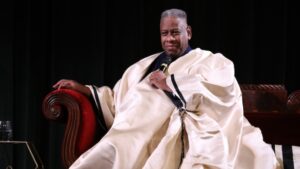
André Leon Talley
André Leon Talley, who became known across the world as an editor at Vogue magazine, died in January. Talley was known as a singular figure for years, working as a Black editor in high fashion. He developed close relationships with designers like Karl Lagerfeld as well as Vogue editor in chief Anna Wintour, among others.
Talley was 73.
The former editor died at a hospital in White Plains, N.Y., where he had been living, TMZ reports. It was unclear what he was hospitalized for.
Talley was raised in North Carolina and took to fashion at a young age, watching women parade in and out of church. He was raised by his grandmother, and later attended Brown University, where he studied French literature.
After college he interned for Diana Vreeland, the legendary Vogue editor, at the Metropolitan Museum of Art. She worked in the Costume Institute. He went from there to working at Andy Warhol’s Interview Magazine and then Women’s Wear Daily, an industry trade journal. While at WWD he moved to Paris and became the Paris bureau chief, putting him in constant contact with the industry’s most powerful designers. His reviews continually gained him notice while he also made close friendships with the likes of Lagerfeld and Yves Saint Laurent.
Eventually he went to Vogue, where he met Anna Wintour, who was another editor there at the time. The two developed a working relationship, and after Wintour ascended to editor in chief, Talley became creative director, a position he held from 1988 to 1995.
After serving as creative director of Vogue, Talley was editor at large for the title. He also served as a top editor for Numero Russia. He said that he left Vogue for Numero because the salary was bigger. When he left Numero, after only a year, he said it was because of Russia’s anti-LGBTQ+ laws.
“The one thing that really impacted me was Rachel Maddow’s reporting last winter on the anti-LGBT laws in Russia,” Talley told WWD. “There are no civil rights for people there. That’s one of my reasons for departing.”
For much of his career, Talley demurred on details of his personal life, but he did once identify as fluid in terms of sexuality.
After that he continued to work for Vogue and did some work for Zappos Couture, among other projects. For a few years he was a staple hosting the red carpet for Vogue at the Met Gala. He also served as a consultant, providing advice to high-profile clients such as Michelle Obama on matters of style. He was also introduced to an even wider audience through his role in The September Issue as well as a judge on America’s Next Top Model.
Talley wrote two memoirs: A.L.T.: A Memoir and The Chiffon Trenches: A Memoir. He was also the subject of the film The Gospel According to Andre. This came in addition to Talley serving as a go-to fashion historian for various documentaries like Valentino: The Last Emperor, Manolo: The Boy Who Made Shoes for Lizards, and The First Monday in May.
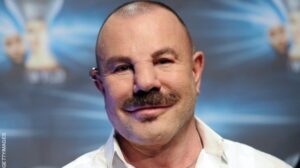
Manfred Thierry Mugler
Designer Manfred Thierry Mugler, the founder of the brand Mugler, died in January.
His personal Instagram account first reported the news.
“We are devastated to announce the passing of Mr Manfred Thierry Mugler on Sunday January 23 2022,” they wrote. “May his soul rest in peace.”
Mugler was an iconic designer who made an international name for himself in the 1980s and early 1990s. His creations have gone on to inspire generations of designers, and in his over-the-top theatrical shows, he was one of the first designers to consistently use out trans models on the runway.
He was born in Strasbourg, France, and started studying classical dance at a young age — he learned to make clothing by making outfits for himself. He began his design career in 1971 but didn’t launch is own collection until 1973. His designs often featured broad, sharp shoulders, high glamour, and sharp tailoring. He also often incorporated sci-fi or futuristic elements into his designs.
While his creations were marvels in and of themselves, Mugler began to present them in arena-like presentations with over-the-top themes. His brand expanded, with the designer showing at Paris Haute Couture Fashion Week as well as launching a successful fragrance arm — this started with Angel in 1992. Parent company Clarins shuttered the apparel line in 2003 and Manfred turned his creativity elsewhere. (Claris had bought the brand in 1997.) The fragrances remain some of the best-selling in history.
He also explored other projects like doing the costumes for the models in George Michael’s “Too Funky” video in 1992.
As his fashion shows became spectacles, his castings for those shows varied. He would cast bonafide supermodels as well as celebrities. He also often cast out trans women. For example, in the spring 1991 show Tracee Ellis Ross, Naomi Campbell, Linda Evangelista, and Roberta Close all walked the runway. In addition to Close, other trans models like Connie Fleming and Teri Toye walked in Mugler shows in the early ’90s.
In 2009, after his retirement from fashion, Mugler notably created the costumes for Beyonce’s I Am … world tour and functioned as an artistic adviser to her. He also directed for Cirque du Soleil and has worked as a photographer. In addition, he became a bodybuilder.
Over the past decade, there has been a renewed interest in Mugler designs, which has materialized in not only retrospectives but celebrities wearing archival pieces. The house of Mugler is currently under the purview of creative director Casey Cadwallader. Cadwallader stepped into the role in 2018 but was preceded by designers like David Koma and Nicola Formichetti.

James Bidgood
James Bidgood, the filmmaker behind the underground gay classic Pink Narcissus, died in January at age 88.
Bidgood, who was also a photographer, drag performer, and fashion designer, died at his apartment in New York City, according to The Bay Area Reporter.
Bidgood shot Pink Narcissus over the course of seven years, mostly in his small Manhattan apartment; he was its writer, director, and cinematographer. It depicted the fantasies of a young gay sex worker, played by Bobby Kendall, Bidgood’s roommate. The other cast members included Don Brooks and Charles Ludlam, the famed avant-garde theater artist.
The film was released in 1971 and was extremely popular on the underground film scene, but due to differences with a producer, Bidgood had his name removed from it. The director was listed as “Anonymous” and for many years was believed to be Andy Warhol.
Pink Narcissus was restored and re-released by Strand Releasing in 1999, and Bidgood began to receive recognition. “Bidgood created breathtaking camera movements, elaborate forest scenes, wild Persian fantasy sequences, and a neon netherworld,” Ed Sikov wrote in The Advocate that year. Bidgood said he appreciated the attention, but he would rather have received it years earlier.
1999 also saw the release of a book of Bidgood’s photography, titled simply Bidgood, with text by Bruce Benderson. The artist’s mid-century photographs of young men were erotic and highly stylized. “He staged cinematic extravaganzas in his tiny Manhattan apartment for publications like Muscleboy and The Young Physique,” a contributor to Another Man magazine wrote in 2019.
“I wanted to photograph naked young men as opulently and as attentively as those professional ladies appearing in Playboy-type magazines were photographed,” Bidgood told Another Man. His models’ genitals were hidden, often draped in filmy fabric, to skirt laws against depictions of full-frontal nudity.
Bidgood, born in Madison, Wis., moved to New York City in 1951, when he was 18. He attended the Parsons School of Design and forged a career creating gowns for high-society balls; he also worked as a window dresser, graphic designer, and stylist. He was a drag artist as well, performing under the name Terri Howe at a time when cross-dressing was illegal.
With his late-in-life fame came exhibitions of his photography at galleries and New York’s Museum of Sex. He has been credited as an influence on artists and musicians such as David LaChapelle, Pierre et Gilles, Charli XCX, and Lil Nas X.
A GoFundMe campaign has been set up to cover funeral and burial expenses. His burial site at Cedar Park Cemetery in Hudson, N.Y., will be a place “where admirers can come for years to remember both the artist and the man,” executor Kelly McKaig wrote on GoFundMe.

Isabel Torres
Isabel Torres, who came to prominence in the U.S. after her role on HBO Max’s Veneno, died in February at age 52. The news was first reported by her family on the performer’s Instagram.
Torres was most known for portraying Cristina Ortiz in the Spanish television show Veneno. That series was picked up by HBO Max and received international attention, bringing the star a new flood of fans after having been a pioneer for LGBTQ+ communities in her native Gran Canaria.
“I think in it there was a lot of me, and in her there was a lot of all of us,” Torres told The Advocate of portraying an older version of Ortiz. “I never thought we would have a lot of similarities, and at the end, after seeing the character, learning her story, and learning to love her through her wounds, I understood that we share a lot in common.”
After the eight-episode limited series premiered internationally in 2020, the actress posted what she said was her last video as she had been battling lung cancer for two years prior — she said that she had been diagnosed while filming. The cancer reportedly led to bone metastases.
“They give me two months to live,” she said. “Let’s see if I get over it, and if not, what are we going to do? Life is like that.” The video was posted last November.
“Today, February 11, 2022, we say goodbye to Isabel,” read a statement, translated from Spanish, posted on Torres’s Instagram account. “Although her family and friends feel her loss deeply, we know that wherever she goes, she will have fun as only she knows how. Thank you for all the messages of affection and concern. She has left feeling very loved and supported.”
In 1996, Torres became the first Canarian woman to have her gender changed on her legal ID. She often spoke about the LGBTQ+ community on both radio and television.
Following Veneno, she won a series of awards including an Ondas Television Award for Best Female Performer in Fiction.
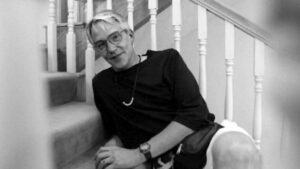
Don Maison
After a battle with esophageal cancer, longtime HIV advocate and civil rights attorney Don Maison passed in February. He was 74.
Maison, who was also the longest-serving former president and CEO of AIDS Services of Dallas, was a civil rights lawyer in the 1970s and ’80s who represented LGBTQ+ Texans fighting for fair treatment.
Originally from Michigan, Maison moved to Dallas after dropping out of a seminary school in Illinois. After realizing civil rights and social justice was his true calling, Maison obtained his law degree at St. Mary’s University School of Law in San Antonio and moved back to Dallas in the mid-1970s.
Once in Dallas, he joined the growing LGBTQ+ rights movement and represented those, much like himself, who were targeted by police because of their sexuality. In 1980, Maison was the top legal defender of gay men arrested for “public lewdness” in a police sting the previous year at Village Station.
While at the helm of AIDS Services of Dallas, Maison took a rundown property and transformed it into viable housing for hundreds of men, women, and children living with HIV. Locals say during his off time, Maison he could often be found at JR’s Bar & Grill, the local queer hangout that he affectionately referred to as his “church.”
Maison himself said that both his best and worst quality was “not letting go.” Never one to take backseat, especially in terms of speaking out for civil rights, Maison bravely took on the police, big business, and the fight against HIV and its stigma in order to improve the quality of life for thousands of Dallas residents.
“Don was remarkable for his sense of social justice. It was what he lived and breathed,” said longtime friend Ellen Sweets shortly after his passing. “There’s an old spiritual that Mahalia Jackson sings that goes, ‘I’m gonna live the life I sign about in my song.’ That’s what he did. He lived the life that he talked about.”

Arnie Kantrowitz
Arnie Kantrowitz, a pioneering activist for LGBTQ+ rights and founding member of GLAAD, has died in February at age 81.
Kantrowitz died January 21 at a Manhattan rehabilitation center, his life partner, Dr. Lawrence D. Mass, told The New York Times. The cause of death was complications of COVID-19.
Kantrowitz was “an early champion of gay rights and an indefatigable campaigner for fairer treatment of gay people by the media,” the Times notes. Mass, a founder of Gay Men’s Health Crisis, called Kantrowitz “a true sage and champion.”
He became vice president of the Gay Activists Alliance, one of the first groups founded in the wake of the Stonewall riots, in 1970. That was also the year he came to terms with being gay, according to the Times. He helped found GLAAD, then known as the Gay and Lesbian Alliance Against Defamation, in 1985.
He was a professor in the English department at the City University of New York’s College of Staten Island from 1965 to 2006, and while there he created one of the first gay studies courses in the nation. He promoted the work of Walt Whitman and other gay writers.
In 1977 he published a memoir, Under the Rainbow: Growing Up Gay, in which he chronicled the difficulties he and other gay people faced in mid-century America. He twice tried to take his own life, he reported. He also described events in the gay rights movement, including New York City’s first Pride march. Much later, in 2009, he was grand marshal of the Staten Island Gay Pride Parade.
He was a contemporary and friend of many fellow activists, including Vito Russo, author of The Celluloid Closet. He appeared in Vito, a 2011 documentary about Russo, and several other documentaries about the LGBTQ+ community, including Gay Sex in the ’70s and After Stonewall. He also was one of the first out gay guests on popular radio and TV talk shows, speaking to Geraldo Rivera, Sally Jessy Raphael, and more.
Tributes are pouring in. “Arnie Kantrowitz’s activism paved the way for the growing visibility, protections, and acceptance of the LGBTQ community that we see today,” said a statement from Sarah Kate Ellis, president and CEO of GLAAD. “At a time when LGBTQ people were villainized in the public sphere, Arnie bravely used his personal story to educate the public about our community and its history, ultimately fighting for the fair and accurate representation of LGBTQ people and our issues in the media. His legacy inspires us to continue fighting for a future where the most marginalized among us are seen, heard, and protected.”
“He was thoughtful, charming, and like any good professor (he was among the first to teach a course in gay literature, in 1973), a lifelong student and teacher,” former White House staffer Jeremy L. Léon, who interviewed Kantrowitz for a book, wrote on Facebook. He noted that after the formal interview was over, “we spent another six hours talking into the night like old friends.”
“So much of LGBTQ history has been documented, explored, shared, & preserved because of the actions of a handful of people, and he was one of them,” LGBTQ+ media scholar Lauren Herold wrote on Twitter. Also on Twitter, journalist Jay Blotcher commented, “The #LGBTQ community owes this man a great deal for our current #liberation.”
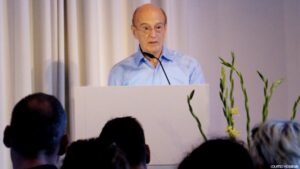
Leo Bersani
Leo Bersani, an academic theorist noted for writing about gay identity during the height of the AIDS crisis, died in February at age 90.
Bersani died at an assisted-living facility in Peoria, Ariz., The New York Times reports. His death was confirmed by his partner, Sam Geraci. The cause has not yet been determined, but Bersani had recently been hospitalized for septicemia.
In 1987 he published the essay “Is the Rectum a Grave?” in which he lambasted “the tendency among some gay activists to respond to AIDS by downplaying their sexuality and emphasizing the need to replicate bourgeois heterosexuality,” the Times reports.
“Male homosexuality was not the mirror image of heterosexuality, he argued, but something radically different, lacking many of the patriarchal inequalities that he said defined straight life,” the paper explains.
“Far from apologizing for their promiscuity as a failure to maintain a loving relationship, gay men should ceaselessly lament the practical necessity, now, of such relations, should resist being drawn into mimicking the unrelenting warfare between men and women,” Bersani wrote in the essay.
In his 1995 book Homos, he critiqued queer theory, saying that by seeing gay identity as socially constructed and performative, proponents of this theory ignored and undermined the liberating qualities of being gay.
Bersani was a professor at the University of California, Berkeley, for most of his career. In addition to writing on gay identity, he was a scholar of literature, especially the work of gay French novelist Marcel Proust. He had an affinity for the theories of French literary critic Michel Foucault, who became a visiting professor at Berkeley at Bersani’s requesr.
Jacqueline Rose, a professor at the Birkbeck Institute for the Humanities at the University of London, called Bersani “one of our most scandalous thinkers” in an interview with the Times. “He thought that the whole point of being a homosexual man is that you disrupted the experience of possession, ownership, fidelity, consistency, safety, and you allowed sexuality to be what it really is, which is disruptive, disorienting, shattering, limit-violating and boundary-breaking,” she said.
Bersani and Geraci had been together since 1992 and married in 2014. There are no other immediate survivors.

Urvashi Vaid
Longtime activist Urvashi Vaid, a leader of many LGBTQ+ and other social justice organizations, died in May at age 63.
Vaid died Saturday at her home in New York City, according to the National LGBTQ Task Force. Vaid was executive director of the group, then known as the National Gay and Lesbian Task Force, from 1989 to 1992. Before that she was its media director.
“We are devastated at the loss of one of the most influential progressive activists of our time,” Kierra Johnson, current executive director of the National LGBTQ Task Force, said in a press release. “Urvashi Vaid was a leader, a warrior, and a force to be reckoned with. She was also a beloved colleague, friend, partner, and someone we all looked up to — a brilliant, outspoken, and deeply committed activist who wanted full justice and equality for all people.”
“Her leadership, vision, and writing helped shape not only the Task Force’s values and work but our entire queer movement and the larger progressive movement,” Johnson added. “We will strive every day to live up to her ideals and model the courage she demonstrated every day as an activist and a person. She will be deeply missed. I miss her already.”
Other major LGBTQ+ groups are mourning her as well. “Urvashi Vaid was a visionary whose leadership and analysis inspired a generation of LGBT activists, including myself,” said a statement from Kevin Jennings, CEO of Lambda Legal. “Urvashi’s intersectional approach to liberation made the necessary connections between issues of sexual orientation, gender identity, race, gender, class, and other systems that interact to create a system of oppression that harms us all. A thinker, an organizational leader, a mentor, and an eloquent writer and speaker, Urvashi was a pioneer whose contributions to our movement have transformed our world. This is an enormous loss for our community.”
“The world has lost a giant in the movement for LGBTQ freedom, justice and equality. After a valiant battle with cancer, Urvashi Vaid died today,” said a statement from Los Angeles LGBT Center CEO Lorri L. Jean.
“I first met Urv in the early 1980s when we were both young attorneys and lesbian activists in Washington, D.C. As we became friends and, eventually, colleagues, I admired her leadership and all that she accomplished, both within and outside of our movement— for queer people, for women, for people of color and against poverty. She continued her work to advance equity and justice until the very end.
“I’ll always be grateful to Urv for being one of the people who encouraged me, back in 1992, to accept the job running the Los Angeles LGBT Center. And when the National LGBTQ Task Force faced severe financial challenges in 2001, she played the key role in recruiting me to step in and help turn things around, lending her support every step of the way.
“Over the years, we spent many an hour laughing and scheming about ways to advance the causes we cared so deeply about. Urvashi was a visionary. But she was so much more: brilliant, hilarious, charismatic, loving, determined and, above all, courageous. She made life better for all of us. Our community and our nation owe her an enormous debt of gratitude. Our hearts go out to Urvashi’s wife, Kate Clinton, and to everyone who loves her. If there’s a heaven, Urv is already organizing the angels.”
Vaid, a graduate of Northeastern University School of Law and Vassar College, began her career as a staff attorney at the National Prison Project of the American Civil Liberties Union, where she initiated the group’s work on HIV and AIDS in prisons.
She spent 10 years at the Task Force in various positions. In 1990, as its executive director, she made a statement at President George H.W. Bush’s speech on AIDS with a sign: “Talk Is Cheap, AIDS Funding Is Not.” Her critique made waves, disrupting the press conference and shedding light on the failures of the Bush administration.
Her time at the Task Force “saw her bring all aspects of queer life and struggle into the public eye,” the group’s press release notes. She cofounded its Creating Change conference, now in its 33rd year.
Vaid was executive director of the Arcus Foundation, a global funder of LGBTQ social justice and great ape conservation, from 2005 to 2010. She was deputy director of the Governance and Civil Society Unit of the Ford Foundation from 2001 to 2005, and served on the board of the Gill Foundation from 2004 to 2014. In 2012, she launched LPAC, the first lesbian super PAC, and it has since invested millions of dollars in candidates who are committed to social justice through legislation.
She was most recently president of the Vaid Group, a social innovation firm that works with global and domestic organizations to advance equity, justice, and inclusion. She was cofounder of the Donors of Color Network, the first cross-racial network connecting individuals of color to leverage their giving for racial equity, and of the National LGBTQ Anti-Poverty Action Network, the National LGBT/HIV Criminal Justice Working Group, the Equality Federation, the National Religious Leadership Roundtable. She was a leader in the development of the currently ongoing national LGBTQ women’s community survey.
She had been senior fellow and director of the Engaging Tradition Project at Columbia Law School’s Center for Gender and Sexuality Law, exploring how tradition-based resistance inhibits projects to advance gender, sexual, and racial equity. Before that, she was senior fellow at the Social Justice Sexuality Project at the Graduate Center of the City University of New York.
She also was an award-winning author and researcher. Her published work includes books, reports, articles, and columns; for several years she was a columnist for The Advocate. She authored the books Irresistible Revolution: Confronting Race, Class and the Assumptions of LGBT Politics (2012), and Virtual Equality: The Mainstreaming of Lesbian and Gay Liberation (1996). She coedited an anthology with John D’Emilio and William Turner, titled Creating Change: Public Policy, Sexuality and Civil Rights (2000).
In Virtual Equality, “she criticized the idea of ‘mainstreaming’ what was and is, in fact, a civil rights movement,” the Task Force press release notes. “Rather than tolerance, she argued, the objective for the movement should be fundamental, actionable change. It was not an immediately popular notion, as media representation for queer people was just beginning to take shape, though it was, for her, of great moral importance.” Virtual Equality won the Stonewall Book Award in 1996.
Vaid was the aunt of activist and performance artist Alok Vaid-Menon, who survives her, along with her longtime partner, political humorist Kate Clinton.
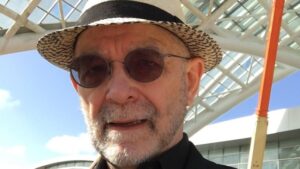
Jeffrey Escoffier
Jeffrey Escoffier, a longtime activist, author of works on gay identity, and creator of public health campaigns, died in May at age 79.
The cause was complications from a fall, his family told the paper.
Escoffier, who grew up in New York City, first made his mark as an activist in Philadelphia, where he moved in 1970 to attend graduate school at the University of Pennsylvania. He became president of the Philadelphia chapter of the Gay Activists Alliance, and in 1972 he founded The Gay Alternative, published by the organization. Eleven years later, in San Francisco, he started another publication, Out/Look: National Lesbian and Gay Quarterly. He and his staff at Out/Look organized the OutWrite conference for LGBTQ+ writers.
He wrote numerous essays on gay identity and the factors that shape it. They were collected in volumes including American Homo: Community and Perversity and Sex, Society, and the Making of Pornography: The Pornographic Object of Knowledge.
“Jeffrey Escoffier embodied the radical queer public intellectual,” author and professor Whitney Strub told The New York Times.
Returning to New York in the 1990s, Escoffier became deputy director of the Office of Gay and Lesbian Health in the city’s Department of Health and Mental Hygiene in 1995. His duties included overseeing AIDS education campaigns. In 1999, he was named director of health media and marketing for the entire department. In that position he ran campaigns on a variety of public health concerns, such as HIV, asthma, rat infestation, smoking, and West Nile virus. He also helped publicize the Affordable Care Act to New Yorkers.
Escoffier was “always able to see a new side to a challenging issue or situation — and often to bring out the humor in it,” Dr. Thomas Frieden, a former city health commissioner, told the Times. A former associate health commissioner, Sandra Mullin, called him “our Renaissance man” and said his work “helped save lives.” “He was a queer man who lifted people up on his team,” she noted in an email to the paper.
Esoffier’s survivors include three sisters.
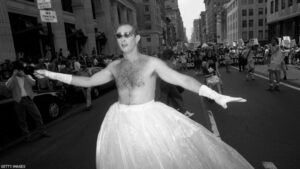
Hunter Reynolds
Hunter Reynolds was a prized asset to the LGBTQ+ community and for HIV activism, as the artist fought homophobia and the AIDS crisis head on during the 1980s and ’90s. He passed in June at the age of 62, in the comfort of his own home, according to ARTnews.
Reynolds was most iconically known for his drag persona, Patina du Prey, who he created in 1989 — the same year he learned he had contracted HIV. His signature look was not popular in the world of drag at the time; he straddled the lines between masculinity and femininity by wearing makeup but, for example, not shaving his body hair. He introduced this look through a photographic series named “Drag Pose,” which featured a wigless Reynolds in deep plunging V-necks showcasing his hairy chest.
Reynolds came out to his mother in 1973 at the age of 14. He was the first out person at his high school and founded the first gay and lesbian student union. After college, his first huge movement in the public eye stemmed from a quote he read by artist Mark Kostabi, from an article in Vanity Fair: “These museum curators, that are for the most part homosexual, have controlled the art world in the ’80s. Now they’re all dying of AIDS, and although I think it’s sad, I know it’s for the better. Because homosexual men are not actively participating in the perpetuation of human life.”
This statement fueled Reynolds fire and he turned to ACT UP, where he would fight the stigma of HIV through protest, advocacy, art and much more. “I knew him and I lost it,” said Reynolds of Kostabi’s comment, in an interview with Another Man. “I had to do something so I got my voice together, stood up in front of the meeting for the first time, and created an action against him. 60 people showed up.”
From then on Reynolds became a public voice and hero for many. His most influential work followed with his Memorial Dress; a black gown screenprinted in gold letters with the some 26,000 names of New Yorkers taken due to the AIDS epidemic. Throughout his career the dress made waves and sparked emotional reactions. Reynolds described this influence to Another Man in 2019 and said, “People found the names of their friends on the dress and began crying, having cathartic events in front of me. I did six weeks of performances almost daily and it changed the direction of my work, connecting to the body and spirit, with the dress as a spiritual vortex to the universe.”
The Memorial Dress continued to tribute the lives lost. In 1996, Reynolds updated the dress with names added to his guest book over three years with assistance from the arts nonprofit, Visual AIDS. Patrick Owens, former president of Visual AIDS, shared his thoughts on Reynolds and his work through an email to ARTnews. “He bore witness to how a powerful and supremely creative voice can raise the visibility of long-term survivors who continue to inspire us. All of us at Visual AIDS honor Hunter as an artist, advocate, activist, collaborator, mentor, provocateur, visionary, and friend.”
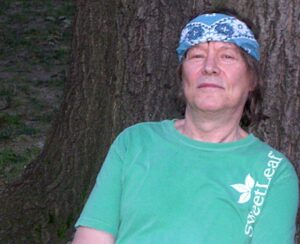
James Rado
James Rado, one of the creators and original stars of the Broadway smash Rent, died in June at age 90.
Hair was a phenomenon, centering on a bunch of anti-conformists, aka hippies, in 1960s New York. It depicted the free love, drug use, and anti-establishment fervor gripping young people from coast to coast. It also had a 20-second nude scene that became infamous. Rado helped bring Hair’s 2009 revival to fruition.
In a 2008 interview with The Advocate, Rado confirmed he and his Hair collaborator, Gerome Ragni, were lovers and their relationship helped inspire the story of Hair.
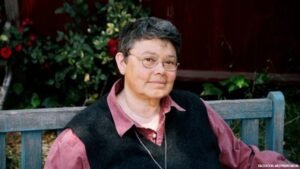
Elana Dykewomon
Acclaimed lesbian author and activist Elana Dykewomon died of cancer at age 72 in August.
Dykewoman died Sunday at her home in Oakland, Calif., The Mendocino Beacon reports. Her death came just 20 minutes before a livestreamed performance of her first play, How to Let Your Lover Die, about the death of Dykewomon’s longtime partner, Susan Levinkind, of Lewy body dementia. Dykewoman had been diagnosed with esophageal cancer about a year ago, her brother David Nachman told the Beacon.
“I know Elana was so excited about having this play in the world and about these performances,” Jennifer Brier, her cousin and literary executor, told the paper. “I like to imagine that she knew we were all gathered to hear her words and watch the amazing performance. This allowed her to finally let go. At her heart, Elana was a poet, and yesterday was truly poetic.” The play is scheduled to be part of the Bay Area Playwrights Festival.
Dykewomon was known for important novels about lesbian life such as Riverfinger Women, a coming-of-age story published in 1974, and 1997’s Beyond the Pale, about Jewish lesbian immigrants from Russia who become involved in movements for social change in early-20th-century New York City.
Riverfinger Women has been named to The New York Times’ list of 100 Greatest Gay Novels, while Beyond the Pale won the 1998 Lambda Literary Award for Lesbian Fiction.
Dykewomon wrote poetry, essays, and other works as well. Some of her essays collected in her anthology Dispatches From Lesbian America, published in 2017. It included a piece about her suicide attempt in her youth after a doctor told her she couldn’t be gay. She also was editor of an international lesbian feminist journal, Sinister Wisdom, succeeding Adrienne Rich in the role, and taught at San Francisco State University.
“She taught legions of students, was generous with her editorial mentorship, and she shaped lots and lots of writers,” Brier told the Beacon.
She was born Elana Nachman in New York City in 1949. She changed her name after the publication of Riverfinger Women in order to no longer be defined by men. “I chose ‘dyke’ for the power, and ‘womon’ for the alliance,” she wrote in an essay.

Anne Heche
Actress Anne Heche, the former partner of Ellen DeGeneres, died in August.
She crashed her car into a house in Los Angeles, setting the car and house on fire. Police said she had narcotics in her system. She suffered severe burns and a brain injury in the crash, had been put on a ventilator, and was in a coma.
A representative for Heche’s family released this statement, TMZ reports: “We have lost a bright light, a kind and most joyful soul, a loving mother, and a loyal friend. Anne will be deeply missed but she lives on through her beautiful sons, her iconic body of work, and her passionate advocacy. Her bravery for always standing in her truth, spreading her message of love and acceptance, will continue to have a lasting impact.”
She and DeGeneres were in a relationship from 1997 to 2000 and were a high-profile couple after DeGeneres came out as a lesbian.
They appeared together on Oprah Winfrey’s show and many others. Their breakup was very public, amid reports that Heche was wandering disoriented along a road in central California and went into a stranger’s home. The couple released a statement calling their parting “amicable.” Heche later said that being in a same-sex romance cost her work in Hollywood, but she was proud to have been “part of a revolution that created social change.”
Heche later married a man, camera operator Coley Laffoon, and then was in a relationship with James Tupper. She has had one child with each. She authored an autobiography, Call Me Crazy, and talked about being the daughter of a closeted gay man.
A photographer encountered DeGeneres in Santa Barbara, Calif., this week and asked her about Heche’s accident. DeGeneres said they were not in touch. In response to being asked if she will be giving well-wishes for Heche’s recovery, DeGeneres said, “I don’t want anyone to be hurt.”
Heche’s films included Donnie Brasco, Wag the Dog, John Q, and Gus Van Sant’s remake of Psycho. She appeared in numerous TV series and was Emmy-nominated for one of them, Gracie’s Choice. She won a Daytime Emmy for her role in the soap opera Another World early in her career, and she received GLAAD’s Stephen F. Kolzak Award in 2000, honoring her as an LGBTQ+ media professional who has advanced acceptance of the community.
Recently, she had a recurring role on the TV series All Rise and wrapped a Lifetime movie, Girl in Room 13. She and Heather Duffy had a podcast, Better Together With Anne and Heather.
Girl in Room 13, in which Heche played the mother of a human-trafficking victim, is set to air in September.
“This project is important to Anne, along with each and every one of us. We all started to make a film that would bring attention to the appalling issue of human sex trafficking,” Lifetime executive Amy Winter said Thursday. “We hope that this film moves you and that you are just as inspired as Anne was to help us with our mission to stop violence against women.”

Norah Vincent
Legendary lesbian writer Norah Vincent died in August at age 53.
Vincent was an author and columnist — writing for The Advocate at one point — most known for her 2006 opus, Self-Made Man, where she chronicled her experiences living as a man for 18 months. The book was a bestseller and put her on the interview circuit.
Vincent followed that up with Voluntary Madness, her chronicle of her time spent in a mental institution. Vincent also wrote novels, like Thy Neighbor. She started Adeline, which explored Virginia Woolf’s suicidal tendencies. Self-Made Man remains Vincent’s crowning achievement.
“Manhood is a leaden mythology riding on the shoulders of every man,” she wrote, according to The New York Times. “If men are still really in power, then it benefits us all considerably to heal the dyspeptic at the wheel.
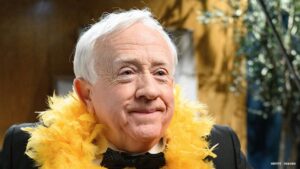
Leslie Jordan
The beloved comedic actor Leslie Jordan died in October. He was 67 years old.
The news was first reported by TMZ.
Law enforcement told the outlet that Jordan crashed his BMW into the side of a building. Authorities said Jordan may have had a medical emergency before the crash, TMZ reports.
The building Jordan hit was at Cahuenga Boulevard and Romaine Street in Hollywood, the Los Angeles Times reports. He was declared dead at the scene of the crash.
The condition of Jordan’s BMW indicates he may have lost control of it before hitting the building, the Times notes.
On Instagram, Jordan’s official account posted a tribute to the actor.
“The love and light that Leslie shared will never go out and we invite you to share their memories and comfort each other during this time. In the coming days we will be giving a glimpse of a project Leslie was really proud of and was looking forward to sharing with the world,” it said.
Jordan was best known for his longtime role as Beverley Leslie on Will & Grace. The Memphis, Tenn.-born actor became a rival to Megan Mulally’s Karen Walker on the show and won an Emmy Award for his portrayal in 2006.
He developed a long career in film and television appearances with projects like Reba, American Horror Story, Ugly Betty, and Nash Bridges to his name. He also played Lonnie Garr in Hearts Afire from 1993 to 1995.
At the time of his death, he was starring in Call Me Kat along with out actor Cheyenne Jackson, Mayim Bialik, Kyla Pratt, Julian Gant, and Swoosie Kurtz.
During the pandemic, Jordan became a social media star via Instagram. He posted videos from an Airbnb he was living in doing everything from twirling batons to cracking jokes, and making his Instagram following grow exponentially from 80,000 followers to more than 3 million. He even gave anecdotes about his life, revealing photos of himself when he was younger and nicknames he’d once had like “Sweet N Low.”
“I’d do an exercise video because there are so many gay men with these perfect abs and they do exercise videos,” Jordan told The Advocate in 2020 for a digital cover story about how the viral videos started. “So I did an exercise video where my stomach looked like my water’s about to break.”
This viral stardom seemed to coincide with renewed interest. Ryan Murphy began a new project with Jordan and Dylan McDermott in 2020. In addition, Jordan was named the host of a competition show about cleaning called Squeaky Clean.
Jordan was a multihyphenate performing on-screen and onstage, in addition to releasing music. In 2021, Jordan released his first album, titled Company’s Comin’, featuring gay icon Dolly Parton and out singer-songwriter Brandi Carlile among others, and he went on to make his Grand Ole Opry debut as a result. He’s also written stage plays like My Trip Down the Pink Carpet, Stories I Can’t Tell Mama, and Fruit Fly.
Earlier this year, Jordan took to Instagram to announce that his mother, Peggy Ann Griffin Jordan, had died.
For someone with a career so extensive — he first came to Hollywood in 1982 — Jordan is a rarity in that he never officially had a “coming out” moment, as he’s been out for the lion’s share of his career. In interviews, though, he spoke about how his agents have at times pushed him to “butch it up.”
“Well, sh*t …” as Jordan might say in one of his viral videos.

Aaron Carter
Aaron Carter died at the age of 34 in November.
The singer, rapper, and television personality was found dead at his home in Lancaster, Calif., according to TMZ. The outlet was the first to report the news.
Carter’s body was found in his bathtub, TMZ reports. Sources reportedly told the outlet that authorities received a 911 call that a male drowned.
The singer, who was the younger brother of Backstreet Boys star Nick Carter, had a pop career starting in the late 1990s.
After its release in 2000, his sophomore album, Aaron’s Party (Come and Get It), went triple platinum, according to The Hollywood Reporter.
In 2006, Carter appeared along with his siblings, Nick, B.J., Aaron, Leslie, and Angel Carter on the E! realty series House of Carters. His sister Leslie died in 2012 at 25.
In 2017, Carter came out as bisexual in a Twitter post. He said he would be open to dating a man if one “comes into my life and sparks an interest.”
“I grew up in this entertainment industry at a very young age and when I was around 13-years-old I started to find boys and girls attractive,” the singer, who had high-profile relationships with Lindsay Lohan and Hilary Duff when he was younger, wrote at the time. “There were years that went by that I thought about, but it wasn’t until I was 17-years-old, after a few relationships with girls, I had an experience with a male that I had an attraction to who I also worked with and grew up with.”
He confirmed he was bisexual in an episode of The Doctors.
However, in 2018, Carter said his comments were “misconstrued.”
“Yeah, no,” Carter said during a podcast interview when asked if he would date a man. “It was more so just a story that happened when I was like 17 with somebody, and I can find men and women attractive, but when it comes down to it, I think it was a little misconstrued.”
Carter added, “I see myself being with a woman and having kids. I want to have a family.”
Over the years, Carter has been public with substance use issues. The Hollywood Reporter reported that he had gone to rehab earlier this year to try to regain custody of his son, Prince.
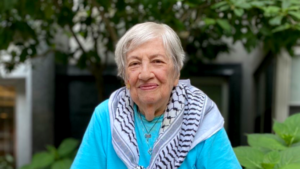
Shatzi Weisberger
Shatzi Weisberger, a lesbian, longtime activist for many causes, nurse to people with AIDS, and death educator, died in December at age 92 at her apartment in New York City.
Weisberger had wide-ranging interests, and one of them was preparing for death in a conscous and positive fashion. She studied the subject of death intensively and led discussion groups on the subject.
“I really want to experience my dying,” she said in 2018, according to The New York Times. “I don’t want to die in a car crash or be unconscious. I want to be home, I want to be in my bed, I want to share the experience with anybody who’s interested.” That statement came at an event she called a “FUN-eral,” in which she appeared in a cardboard casket and hosted numerous friends.
In October of this year, she was diagnosed with untreatable pancreatic cancer. She invited the Times to cover her journey to death. She surrounded herself with friends, although toward the end she did not want visitors, and reconnected with her estranged son. She did not wish to take pain medication, but eventually the pain became so extreme that she had to.
“What Shatzi did was weave community around her,” friend Claire Raizen told the paper. “Maybe that was the perfect preparation, because we could do it. Was it stressful? Was it a burden? Absolutely. But we did it.”
Weisberger worked as a nurse for 47 years, some of which was spent caring for people with AIDS. “My main interest was birth, coming into the world, and death, leaving the world,” she told The Advocate in a podcast interview this year. “I wasn’t comfortable with death. I was interested in it. And about five or six years ago, I was bored. And I said, ‘I have to have a project.’ And I thought, I’ll become a death educator. So I took a five-month, 70-hour course at the Open Center on thanatology, the art of dying, and I took a hospice course with the New York City visiting nurse service, and I started doing workshops on the art of dying.”
She was an activist with Jewish Voice for Peace, Black Lives Matter, the prison abolition movement, the antinuclear movement, and more. She became known as the “People’s Bubbie,” using a Yiddish term for grandmother, and that was her Twitter handle as well.
“As the great-granddaughter of Samuel Gompers, founder of the American Federation of Labor, organizing is in my blood,” she wrote in HuffPost in 2020. “As a white person, I’ve fought against the redlining of Black communities in Long Island. As a Jew, I’ve organized for Palestinian freedom. As a lesbian and a daughter of a lesbian, I’ve struggled against patriarchy and war.”
“I was a political lesbian for many years,” she said in her Advocate interview. “I just loved being around lesbians. … I was very much into arguing against nuclear technology. My first demonstration, one of my earlier demonstrations, was here in New York City and we did a die-in along with other people lying on the ground. And I started to cry because I felt that I was in the right place, doing the right things with the right people. I felt very together about it. I have been an activist ever since.

Jim Kolbe
Jim Kolbe, a longtime Republican congressman who came out as gay in 1996 and was reelected several times afterward, died in December at age 80.
The cause of death was a stroke, the Arizona Daily Star reports. Kolbe represented a district centered on Tucson in the U.S. House for 11 terms. He was first elected in 1984, and in 2006 he decided not to run again.
His coming-out was spurred by outrage over his vote in favor of the Defense of Marriage Act, which denied federal government recognition of same-sex marriages and allowed states to deny recognition to such marriages performed in other states. DOMA was passed and signed into law, but it has since been invalidated by the Supreme Court.
Several news outlets began looking into Kolbe’s sexual orientation, The Advocate among them. The Advocate maintained its policy against outing but did contact Kolbe to ask him to explain his DOMA vote and to see if he would discuss being gay. He declined to talk about his orientation, but he made his coming-out announcement soon afterward, saying The Advocate’s questioning was a key factor in his decision.
He said he voted for DOMA because he thought every state should have the right to define marriage as it saw fit. When he finally came out, he said there was “some relief” and “no embarrassment” in doing so. He came out in August 1996 and was reelected in November of that year, as he was four more times.
Kolbe “was a social moderate and a fiscal conservative,” The Washington Post notes. He was a champion of free trade but also of environmental preservation, and he eventually called the Republican Party’s opposition to marriage equality and abortion rights “a terrible mistake.”
“As much as the social conservatives might not like to hear it, there will be a time when your grandchildren say: ‘What was the argument with same-sex marriage? Who cares?’” he told the Tucson Citizen in 2006.
He came to regret his vote for DOMA, and in 2013 he married his longtime partner, Hector Alfonso. The two men married in Washington, D.C., because Arizona did not allow same-sex marriage at the time.
“He belongs to so many people,” Alfonso told the Arizona Daily Star Saturday. “He gave his life for this city. He loved Tucson, he loved Arizona.”
Kolbe left the Republican Party in 2018 because of Donald Trump. He became an independent and in 2020 said he would vote for Democrat Joe Biden for president. The Republican Party had “become a wholly owned subsidiary of the Trump operation,” he told The Advocate that year.
In 2021, in another Advocate interview, he pushed for his former party to return to some measure of sanity. “We need a thriving two-party system in this country,” he said. “I’m sad and frustrated that Republicans today have lost their way. My hope is that the party goes back and fights for the basic Republican Party issues I support; less government, lower taxes, free trade, balanced budget, an immigration policy that allows people to come into this country, and a strong national defense. In order to flourish, our country needs less polarization and more rationalization.”
Among those memorializing Kolbe was a gay Democratic congressman, David Cicilline, chair of the LGBTQ+ Equality Caucus. “As an out gay man in Congress in the late 1990s and 2000s, Jim Kolbe affirmed to the American people and gay men across the country that there was a place for them in the halls of Congress,” he said in a press release. “He served his constituents, Pima County, and Arizona with dedication and integrity. Congressman Kolbe made history as the first openly LGBTQ+ veteran in Congress, and he helped pave the way for me and so many of my LGBTQ+ colleagues. My thoughts are with his partner, Hector Alfonso, and all his loved ones as they mourn his loss.”
Another Democrat, Speaker of the House Nancy Pelosi, released a complimentary statement about Kolbe as well: “Congressman Kolbe first came to the Capitol as a teenager to serve as a Page for Senator Goldwater — so it was fitting when he returned to Washington in 1985 to represent his beloved home state in his own right. Here, he often reached across the aisle to uphold his values, from protecting women’s health freedom to reforming our immigration system, and especially conserving Arizona’s beautiful lands and cultural wonders. His courage to become only the second openly gay Republican elected to Congress was admired by many of his colleagues and countless Americans.”
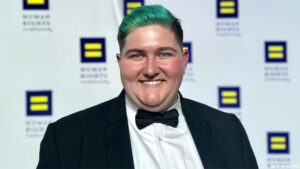
Henry Berg-Brousseau
Trans rights activist Henry Berg-Brousseau, who worked to oppose anti-transgender legislation in his home state of Kentucky before going on to work with the Human Rights Campaign, died in December at the age of 24.
His mother, Kentucky Democratic state Sen. Karen Berg, said Berg-Brousseau died by suicide.
In a statement posted on Twitter via Bluegrass Politics, Berg said that her son had spent his life “working to extend grace, compassion, and understanding to everyone, but especially to the vulnerable and marginalized.”
She added that “this grace, compassion, and understanding was not always returned to him” as a transgender man. The state senator called out the politicians who actively sought to marginalize her son because of who Berg-Brousseau was.
Berg said Berg-Brousseau had dealt with mental illness, “not because he was trans but born from his difficulty finding acceptance.”
He was born in Louisville, Ky., according to an obituary.
“While a student at Louisville Collegiate School, he advocated for the rights of transgender people by organizing a protest against gay conversion therapy, speaking to the Kentucky Senate Education Committee, and participating in other local and national causes. His speech to the committee was shared on John Oliver Tonight,” it said.
Berg-Brousseau went on to double major at George Washington University in political science and history and minored in Jewish studies.
In his work with the Human Rights Campaign, Berg said her son was acutely aware of the hateful rhetoric rising against transgender people in the country, adding that he saw that hate firsthand directed at his job. She said that in one of the final conversations she would have with her son he told her that he was concerned if he would be safe going out.
“The vitriol against trans people is not happening in a vacuum,” Berg wrote. “It is not just a way of scoring political points by exacerbating the culture wars. It has real-world implications for how transgender people view their place in the world and how they are treated as they just try to live their lives.”
Berg-Brousseau is survived by his mother, his father, and his sister, along with other family members.
“Losing Henry is an unfathomable loss to the Human Rights Campaign family. Henry was a light — deeply passionate, deeply engaged, and deeply caring. His colleagues will always remember his hunger for justice, his eagerness to pitch in, his bright presence, and his indelible sense of humor,” Kelley Robinson, the president of the Human Rights Campaign, said in a statement.
Robinson noted his activist work as a teenager, having to fight for his own rights “far earlier than he should have had to.”
“He was brave,” she said.
She ended her statement by calling for justice for the transgender community.
“We must fight for our transgender family. We must celebrate his light, and honor him by continuing to fight for full equality for all,” Robinson said. “Our thoughts are with his parents, his sister, his entire family, and our whole community.”
If you are having thoughts of suicide or are concerned that someone you know may be, resources are available to help. The 988 Suicide & Crisis Lifeline at 988 is for people of all ages and identities.
Trans Lifeline, designed for transgender or gender-nonconforming people, can be reached at (877) 565-8860. The lifeline also provides resources to help with other crises, such as domestic violence situations.
The Trevor Project Lifeline, for LGBTQ+ youth (ages 24 and younger), can be reached at (866) 488-7386. Users can also access chat services at TheTrevorProject.org/Help or text START to 678678.
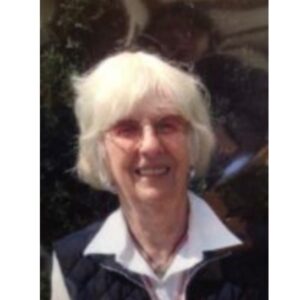
Marijane Meaker
Marijane Meaker, at the forefront of the lesbian pulp novel explosion in the mid-20th century, died in December at age 95. She also went by the name M.E. Kerr.
Meaker’s most famous book was Springfire, which chronicled a young woman falling in love with her sorority sister. Meaker used many pen names in her work, including Kerr, and writing as Vin Packer for Springfire. Meaker was also the creator of books for children and she used her own name when she penned a book about her relationship with legendary lesbian writer Patricia Highsmith — Highsmith: A Romance of the 1950s.
But Springfire and her other lesbian pulp novels, like We Walk Alone, were her most lasting legacy.
“Meaker had in fact founded a new genre, lesbian pulp fiction, which was to become for a stretch of about 15 years wildly successful, and a moneymaker,” lesbian pulp novelist Ann Bannon told The New York Times. “It was finding fans among both sexes, and coast to coast, pushing same-sex romance into conversational orbit for the first time in history.”

Kathy Whitworth
Arguably the most successful female golfer of all time, Kathy Whitworth, died in December at age 83.
The lesbian golfer first began competing in the 1950s.
“Whitworth, whose rookie season was 1959, won 88 tournaments over her career, her last coming in 1985 at the age of 46,” Outsports reports. “That number has never been equaled by any man or woman in golf. Tiger Woods and Sam Snead have 82 wins on the PGA Tour, though Woods’ 110 wins across all tours is higher.”
“It is with a heart full of love that we let everyone know of the passing of the winningest Golf Professional ever, Kathy Whitworth,” Whitworth’s longtime partner, Bettye Odle, said in a statement. “Kathy passed suddenly Saturday night celebrating Christmas Eve with family and friends. Kathy left this world the way she lived her life, loving, laughing and creating memories.”
Source : www.advocate.com
Copyright © All right reserved to pahichan.com Site By: Sobij.